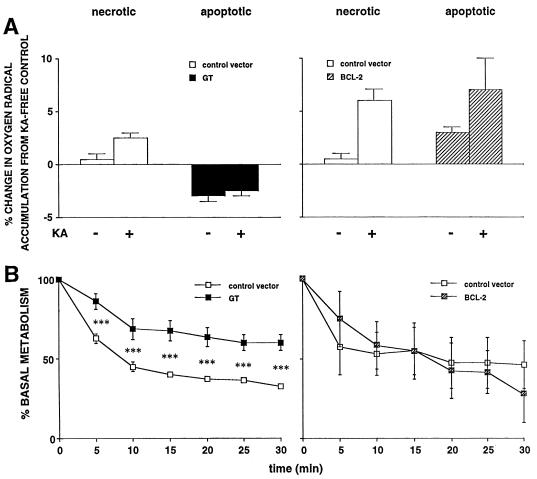Figure 2.
(A) Effects of GT (Left) or Bcl-2 (Right) on ROS accumulation post-KA. Values are expressed as percentage above that in mock-infected control cultures without KA. In control vector-treated wells, KA significantly increased ROS accumulation (P < 0.05 and 0.01 in GT and Bcl-2 studies, respectively, post hoc test after two-way ANOVA). In GT-infected wells, KA did not significantly increase accumulation, and in either condition (±KA), there was significantly less accumulation than in cognate control wells (P < 0.01 for both). In contrast, KA significantly increased accumulation in Bcl-2-treated wells (P < 0.05), and values did not differ significantly from the cognate control wells. (B) Effects of GT or Bcl-2 on metabolism in primary hippocampal cultures under hypoglycemic conditions as assessed by proton efflux rates, measured by microphysiometry. vIE1GT (Left) attenuated the drop of metabolism posthypoglycemia (***, P < 0.001 by post hoc test after two-way ANOVA, comparing experimental vector versus control vector at the same time point), whereas vα22βgalα4bcl-2 (Right) had no effect. Data on the left previously published (7), making use of a related HSV vector expressing either GT (vIE1GT) or β-Gal as a reporter gene (vIE1βGal).

